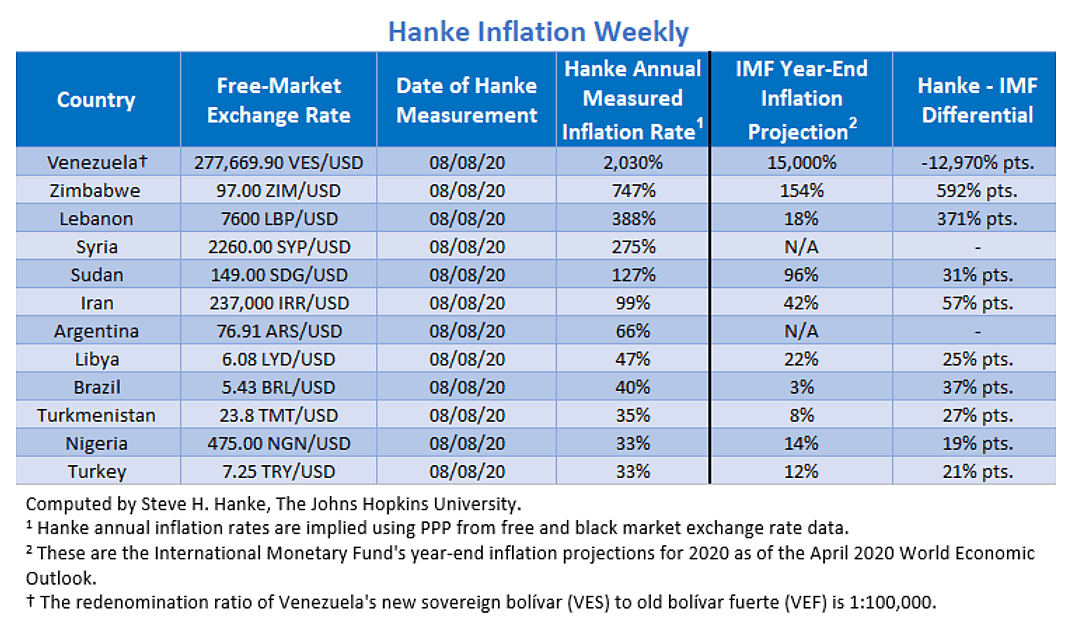Evidence from Germany’s 1920–23 hyperinflation episode — as reported by Jacob Frenkel in the July 1976 issue of the Scandinavian Journal of Economics — confirms the accuracy of PPP during hyperinflations. Frenkel plotted the Deutschmark/U.S. dollar exchange rate against both the German wholesale price index and the consumer price index. The correlations between Germany’s exchange rate and the two price indices were very close to one throughout the period, with the correlations moving to closer to one as the inflation rate increased. In “The Measurement of Zimbabwe’s Hyperinflation,” which appeared in the Spring/Summer 2009 issue of the Cato Journal, Alex Kwok and I found that exactly the same relationships held in Zimbabwe’s 2007-08 episode of hyperinflation. This hyperinflation ranked second highest in world history — many times higher than Germany’s.
Beyond the theory of PPP, the intuition of why PPP represents the “gold standard” for measuring inflation for countries experiencing elevated inflation rates and/or hyperinflation is clear. All items in these economies are either priced in a stable foreign currency (the U.S. dollar) or a local currency. If goods are priced in terms of the local currency, those prices are determined by referring to the dollar prices of goods and then converting them to local prices after checking with the black-market spot exchange rate. Indeed, when a price level is increasing rapidly and erratically on a day-by-day, hour-by-hour, or even minute by-minute basis, exchange-rate quotations are the only source of information on how fast inflation is actually proceeding. That is why PPP holds, and why we can use high-frequency (daily) data to calculate inflation rates for countries with high rates of inflation, even during episodes of hyperinflation.
Each day, I use purchasing power parity and high-frequency data to measure prices in the countries with the world’s highest inflation rates. Below is my list of countries with annual inflation rates exceeding 25 percent per year.

